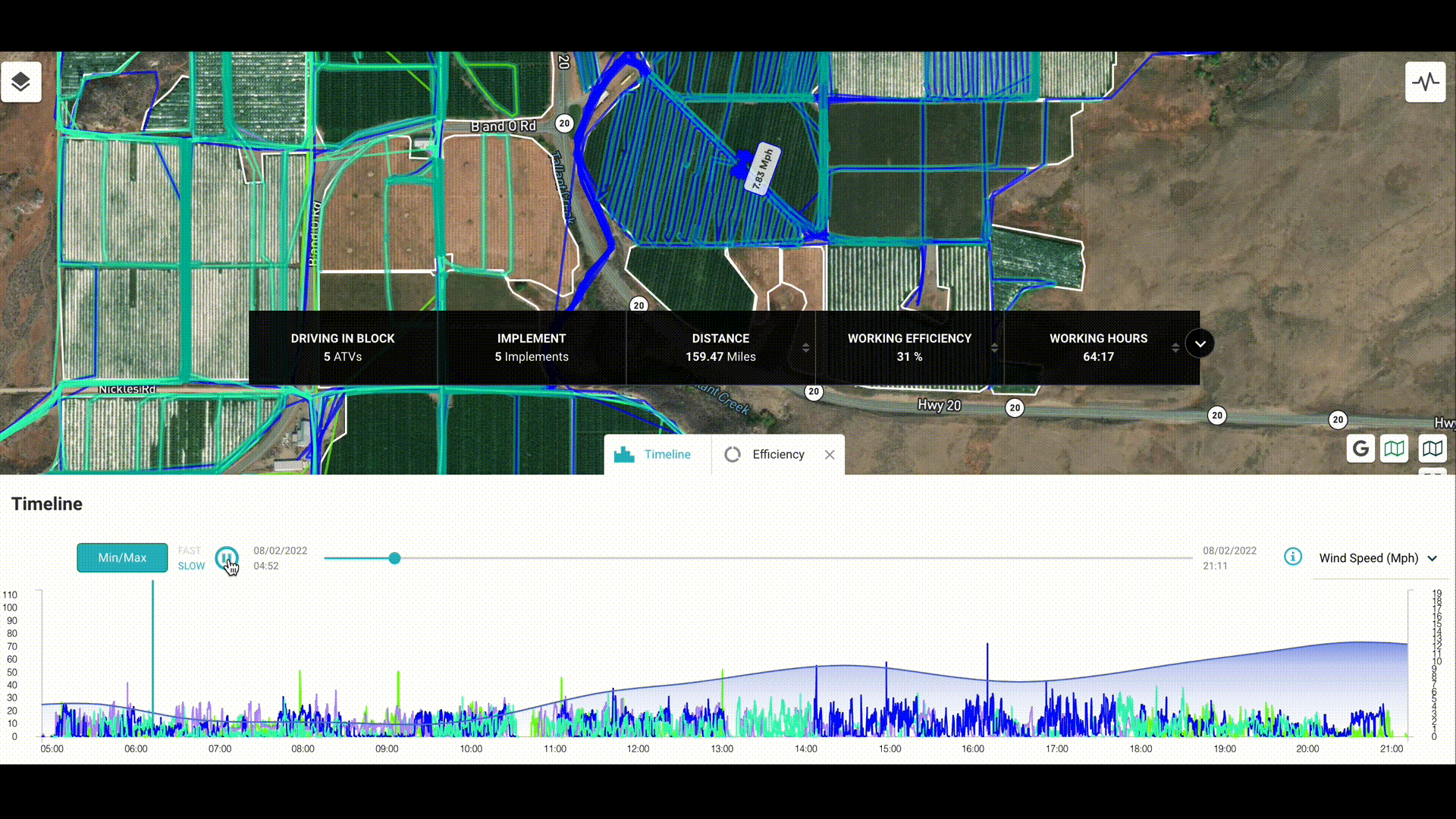In addition to real-time monitoring, Clay leverages activity summary reports to evaluate and compare efficiencies across their operations. He digs into things like how far machines are traveling between blocks, how long machines are idling.
Zirkle Fruit Company leverages Fieldin to gain more visibility over critical irrigation monitoring activities
Case Study from | Fieldin
Zirkle Fruit Company is one of the largest fruit producers in Washington, with orchards, vineyards, and blueberries spanning along the eastern Cascades from the Canadian border to the Oregon stateline.

As Ranch Manager at Zirkle’s Jaw Ranch in Okanogan, WA, Clay Divis helps oversee operations across 1,200 acres of apple and cherry orchards. As with any fruit orchard, irrigation is a critical activity, especially in the late spring and summer months to ensure good canopy establishment. Hence, irrigation monitoring is one of Clay’s top priorities.
Having been born and raised on a farm in north central Washington, Clay is no stranger to the nuances of the land in this region. One particular feature that is common with orchards in North Central Washington is inconsistent soils. “One spot will have 6 inches of topsoil and then 4 feet away, it’s sand and gravel. It’s really spotty like that throughout the farm,” describes Clay.
In areas like North Central Washington where soil textures, layers, and depths are inconsistent, frequent monitoring of irrigation operations is even more important to ensure that trees across the diverse terrain are getting the right amount of water throughout the season. Clay’s team is constantly driving up and down the rows of the orchard on four-wheelers looking for things like dry spots, excessive pooling, and broken lines.
In the hot summer months, they also drive the rows to ensure that overhead cooling systems are working in order to prevent sunburn to the fruit. “One plugged emitter out there that nobody sees for a week could damage a couple bins of fruit. So it’s all really important stuff,” says Clay.
Real-time monitoring and summary reports provide renewed confidence in irrigation monitoring operations
With orchards spanning over 1,200 acres, it can be tough to stay on top of these activities. Prior to Fieldin, Clay had become accustomed to constantly chasing down operators to make sure every area of the orchard was being covered. “I didn’t know if it was getting done because I would see dry spots out in the orchard, but I didn’t have any data to point to,” says Clay. “So I would just tell our crews to keep on top of it, but I had no way of knowing if it was getting done.”


When Zirkle adopted Fieldin, all of the four-wheelers at the ranch were equipped with Fieldin sensors using naming protocols to identify operators in the field. Clay is now able to access all of the transmitted data remotely in real-time, along with post-shift summary reports, to know whether jobs are being completed in the right way. By tracking the location of their machines across the duration of a shift, Clay has a bird’s eye view of blocks that have been covered, where they need to send resources, and how efficiently they’re performing operations.
One of Clay’s favorite features of the Fieldin app is the timeline view that enables him to see patterns throughout the day. “It’s obvious when an operator just pulls up, turns on the valve, and drives off,” says Clay. “To do our jobs effectively, we need to physically inspect the areas where we’re irrigating, and Fieldin gives me the visibility and the confidence to know when things are being done correctly and when they’re not.”

In addition to real-time monitoring, Clay leverages activity summary reports to evaluate and compare efficiencies across their operations. He digs into things like how far machines are traveling between blocks, how long machines are idling, and how many acres each operator is covering in a day. This data allows him to make more informed decisions when planning shifts, while also continuously assessing and improving performance across their operations.
The content & opinions in this article are the author’s and do not necessarily represent the views of AgriTechTomorrow
Comments (0)
This post does not have any comments. Be the first to leave a comment below.
Featured Product

